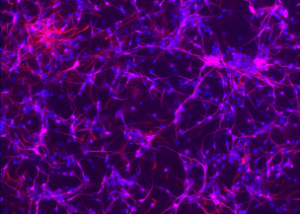
By Gina Daniel, MEM Assistant, Research Translation Core
Research by Duke Superfund Research Center investigators Theodore Slotkin, Richard Di Giulio, and Frederic J. Seidler was featured as this month’s Superfund Research Program Current Research Brief by the National Institute of Environmental Health Sciences. The study, “In vitro models reveal differences in developmental neurotoxicity of an environmental polycyclic aromatic hydrocarbon mixture compared to benzo[a]pyrene: Neuronotypic PC12 Cells and embryonic neural stem cells,” was published in Toxicology in January 2017.
In the study, Theodore Slotkin and Frederic Seidler of Project 1, and Dr. Di Giulio of Project 3, along with other investigators, collaborated to provide a biological basis for the association between early-life PAH exposure and behavior impacts in children and animals. The research supports the SRC’s mission of exploring how early life exposures may have health impacts later in life.
Researchers used two in vitro models to evaluate the effects of PAH exposure on neurotoxicity. The two models differed by the “decision node” or period of neurodifferentiation being evaluated. The Neural Stem Cell (NSC) model is the earlier “decision node” when stem cells differentiated into neurons or glia cells. The second model, PC12, includes multiple processes including cell growth, extension of neuritic projections, and selection of neurotransmitter.
The PAHs being evaluated for neurotoxicity were benzo[a]pyrene (BaP) and the Elizabeth River Sediment Extract (ERSE), which is a PAH mixture obtained from the Elizabeth River Superfund site. These PAH sources allow for differences in effects on neurodifferentiation between an environmentally-derived PAH mixture and a single PAH compound to be observed.
With the use of these models and PAH components, the researchers were able to find that PAHs have direct effects on neurodifferentiation at specific decision nodes, and that these effects are different between the ERSE and BaP. The different effects of ERSE and BaP were found to be specific to the decision node. BaP had a larger effect in the PC12 model, affecting the transition from cell replication to cell growth. Alternatively, ERSE had a larger effect on NSC model, increasing cell replication and enhancing neurodifferentiation. What this means is that future studies should widen inquiry to a larger potential window of susceptibility when neurodevelopment may be affected.
These findings are important because they demonstrate how a complex mixture of PAHs has different effects than a single PAH compound. However, the researchers acknowledge that in natural situations there are also other contaminants that could either contribute or interact with PAHs. This may indicate the need for individual neurodevelopmental “fingerprints” for different mixtures of PAHs.
Importantly, the findings of this study and previous studies by DUSRC Projects 1 and 3 provide evidence of an association between behavior deficits in animals and developmental exposure to PAHs.
Read the NIEHS research brief here: https://tools.niehs.nih.gov/srp/researchbriefs/currentissue.cfm
Read the full paper here: https://www.ncbi.nlm.nih.gov/pubmed/28049045
Citation
Slotkin TA, Skavicus S, Card JA, Di Giulio RT, Seidler FJ. 2017. In vitro models reveal differences in the developmental neurotoxicity of an environmental polycylic aromatic hydrocarbon mixture compared to benzo[a]pyrene: Neuronotypic PC12 Cells and embryonic neural stem cells. Toxicology 377:49-56. doi:10.1016/j.tox.2016.12.008 PMID:28049045 PMCID:PMC5250555





